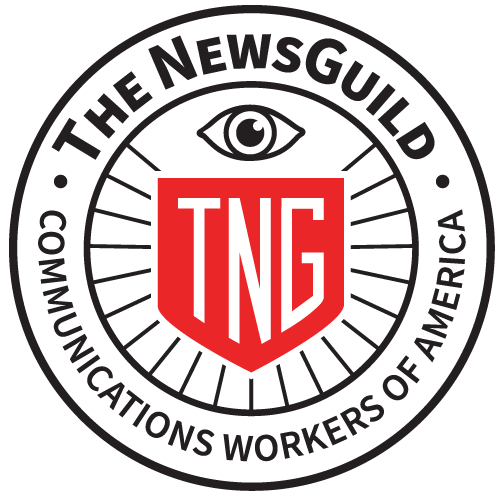
July 12, 2017 – A year after it discovered significant pay disparities at the Wall Street Journal, Local 1096 has taken a closer look at the company’s pay practices — and still doesn’t like what it sees. The Independent Association of Publishers’ Employees (IAPE) found a gap between the rates of pay for men and women dating back to the year 2000, as well as between races and ethnicities.
This year, IAPE commissioned a follow-up statistical review of pay data at Dow Jones, publisher of The Wall Street Journal, Barron’s, MarketWatch, Heat Street and other union-represented entities. The study was performed by Strength In Numbers Consulting Group, and again found a significant gender gap among average salaries for IAPE-represented employees.

Especially for reporters, the local’s report to its members concluded that age regression data show “a statistically significant — and troubling — pattern.”
“Female reporters in their 30s have routinely been paid less than male reporters in their 30s, and this will continue to be true for most years that follow if they stay in the company,” the IAPE report stated.
The comprehensive review of salary data from third-quarter of 2000 through the end of the second quarter of 2016 showed a mean salary of $64,532.75 for women during that timeframe, while the mean salary was $76,127.68 for men across all IAPE-represented positions and locations throughout the United States and in Canada.
Women were paid 81.61% of men on average at the beginning of the review period. The gender gap had narrowed to 87.20% by last year.

In March 2016, IAPE released its review of gender- and ethnicity-based pay gaps at Dow Jones compared to a similar union study presented in 1991. IAPE found little progress had been made in the intervening 25 years. Women at Dow Jones were paid just 86.8% of what their male colleagues made, the study showed. White and Asian men sat at the top of average salary rankings, while African-American and Latina females sat at the bottom.
After IAPE released the study, Dow Jones conducted internal and external reviews of their pay practices. In December, Chief People Officer Mark Musgrave sent an email to staff denying the existence of a pay gap. “The analysis shows that employee pay did not vary because of gender or ethnicity,” he wrote.
Musgrave added this: “The assessment did show that less than three percent of our employees, a group that included both men and women and spanned multiple ethnicities, needed adjustments to align their salaries with those of colleagues as well as the overall marketplace.”
IAPE followed up with information requests to Dow Jones seeking details about management’s internal and external pay data analyses. Dow Jones has thus far refused to provide much of that information to the union, saying the documents requested by IAPE are proprietary, confidential, and “not relevant to the union’s ability to police the contract.”
The company did respond to IAPE’s request for information about salary adjustments after it conducted an external review, and produced a document showing additional pay increases — ranging from 3% to 27% — were granted to 31 union-represented employees retroactive to July 1, 2016.
Several other locals have documented wage gaps, including the NewsMedia Guild (at AP); the Washington-Baltimore Newspaper Guild (at the Washington Post); Minnesota Guild (at the Star Tribune); The NewsGuild of New York (at the New York Times); the Philadelphia Guild (at the Philadelphia Inquirer and Daily News), and the Pacific Media Workers (at the San Francisco Chronicle).
